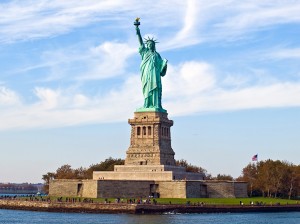Mummies on the Move
Wednesday, May 19th, 2021
A procession of 22 ancient Egyptian royal mummies (18 kings and 4 queens) leave the Egyptian Museum on Tahrir Square and are driven to the new National Museum of Egyptian Civilisation, in Cairo, Egypt, on April 3, 2021.
Credit: © Abaca Press/Alamy Images
Last month, Egyptian royals paraded through downtown Cairo. Called the Pharaoh’s Golden Parade, the procession included 18 kings and 4 queens. The royals traveled from the Egyptian Museum in Tahrir Square to the National Museum of Egyptian Civilization. As they made the 3-mile (5-kilometer) journey, they were met with cheers from adoring fans. Although the fans were lively, the royals were quite reserved. In fact, the royals had been dead for hundreds of years.
The Pharaoh’s Golden Parade marked the relocation of 22 ancient Egyptian mummies. Mummy is a body that has been preserved through natural or artificial means.
The royal mummies were very fragile. Vehicles designed for the event cradled the mummies on their trip. The roads were even repaved to ensure that the kings and queens had a smooth ride. For protection, the bodies were placed in nitrogen-filled boxes. (Pure nitrogen gas is used as a “blanket” to keep away oxygen, which can further degrade the already-ancient corpses.)
Egyptians mummified their dead because they believed the body had to be preserved for use in the afterlife. The earliest Egyptian mummies were naturally preserved by being buried in the hot and dry desert sand. By about 3500 B.C., the Egyptians had developed an elaborate process of preparing mummies. Ancient texts indicate that the process took 70 days to complete. In this process, the stomach, liver, lungs, and intestines were removed from the body through an incision on the left side of the abdomen. The heart, which the Egyptians considered the center of reasoning, was usually left in place. In some cases, embalmers removed the brain with a hook through a hole pierced through the nose.
After the body was dried, it was treated with perfumes and resins that helped seal out moisture. The body could be stuffed with straw, linen, moss, or other material to give it a more lifelike appearance. The body was then wrapped in a great number of linen bandages. Mummies were usually placed in a coffin or a series of coffins, one inside the other.
Wealthy people could afford more elaborately prepared mummies than could the poor. The ancient Egyptians also mummified animals, including baboons, cats, jackals, and rams, which were associated with various Egyptian gods and cults. Pet cats and dogs were sometimes mummified as well. The ancient Egyptians practiced mummification until about A.D. 300, when it was replaced by simple burials following the introduction of Christianity.
Mummies were also made in other parts of the world. In China, some bodies were preserved using mercury salts. Among the Inca of South America, mummies were preserved through the use of smoke and resins. The dry climate of the Andes Mountains aided the preservation of the bodies. The people of the Aleutian Islands and the Ancestral Pueblo people (once called the Anasazi) of the American Southwest also mummified their dead. Mummification is still practiced today in the form of embalming. Among the most famous modern mummies are those of the Communist leaders V. I. Lenin of Russia and Mao Zedong of China.






